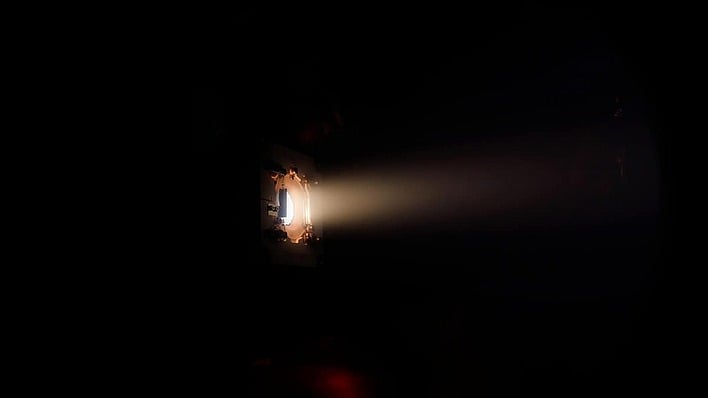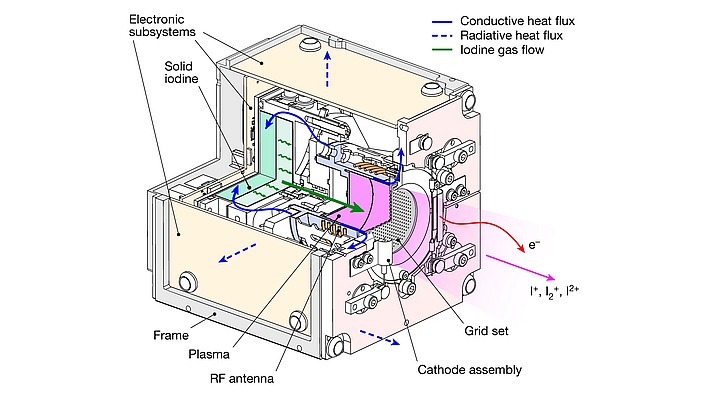ThrustMe's Sexy New Iodine-Fueled Electric Propulsion System Could Transform Space Travel

Extant satellites orbiting the Earth typically use electric ion drives for propulsion. There's a few different types of ion drives, but the most common type relies on ionized xenon gas that is driven out of the craft by natural forces. Thanks to Newton's third law of motion, the force of expelling the gas exerts an equal force in the opposite direction, which pushes the spacecraft in a particular direction. They're not useful on land or in the atmosphere, but their high efficiency makes them excellent for space travel, where there's no atmosphere and minimal gravity to fight against.
Using xenon gas is expensive and presents a lot of problems, though. It would be more much economical and practical if we could use a more common ionizing fuel, like iodine for example. And as it happens, that's exactly what French space tech company ThrustMe has devised, developed, deployed, and tested.
One of the most important aspects that engineers have to consider when designing spacecraft, even unmanned spacecraft, is mass. An increase in mass means an increase in required launching thrust much greater than the increase in mass itself. Using noble gases like Xenon and Krypton requires bulky high-pressure storage tanks that are dangerous when filled and require their own support structures. Even when filled, these tanks still don't represent excellent energy density.
By contrast, using iodine—which is solid at room temperature; medical iodine is in solution—allows the designers to eschew all that additional, complexity and mess. According to ThrustMe, it also carries some three times the storage density. These two advantages alone would be enough to justify the change, but iodine is also abundant in nature and much cheaper than the rare noble gases normally used for these kinds of thrusters.
The concept of using iodine as a fuel for electric engines isn't new, and earlier tests have shown promise, but ThrustMe has actually tested its engine (known as NPT30-I2) in space. A small, 20-kilogram CubeSat satellite launched late last year by China's Spacety was successfully manipulated and moved by ThrustMe's iodine thruster. The results of the tests have finally passed "rigorous" peer-review, and are now being published in the scientific journal Nature. You can find the paper here.


